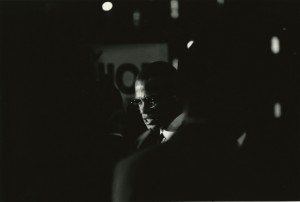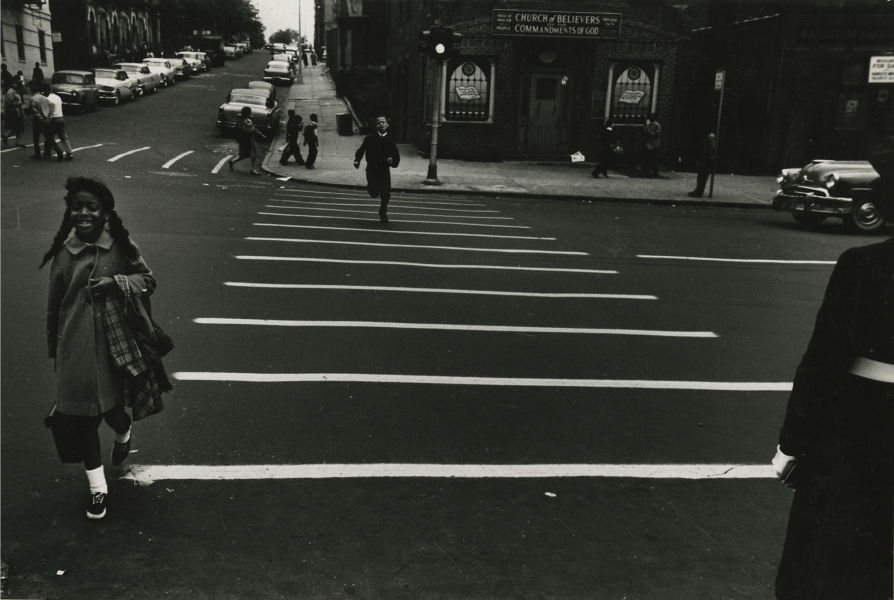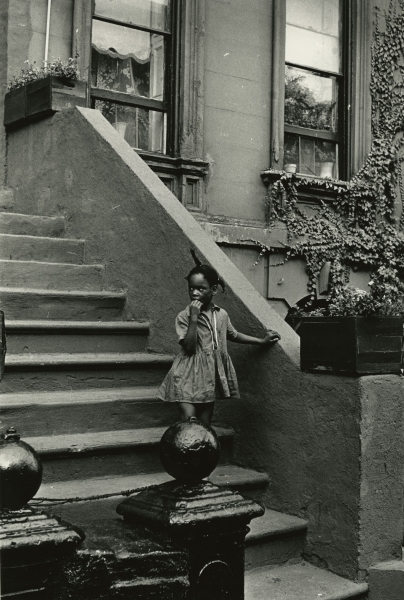
Louis Draper
January 14 – February 20, 2016
Steven Kasher Gallery, NEW YORK
Malcolm-X, 369th Armory, Harlem, 1964.
About:
Steven Kasher Gallery is proud to present Louis Draper, a retrospective of the most important prints from the photographer’s archive. The exhibition features over 50 vintage black and white prints spanning Draper’s career from the 1950s – 1980s. Along with Roy DeCarava, Louis Draper (1935-2002) eschewed the documentary statement, instead making personal and highly refined pictures that portray the joys and sorrows of the everyday people of his Harlem community. This exhibition brings to attention the work of one of the most accomplished and influential proponents of the Black aesthetic in photography.
Untitled, circa 1965.
Draper called his photography a means of “engaged resistance”. In 1963, the same year the Civil Rights Bill was introduced into the U.S. Senate, Draper became a founding member of the Kamoinge Workshop, an eminent and enduring black photography collective. Draper’s goal, and the collective goal of the Kamoinge Workshop, was to elevate the photographic representation of African-Americans, to transcend the stereotype of African-Americans as victims of social oppression by endowing their subjects with agency and dignity. The founding members of Kamoinge included Draper, Roy DeCarava, Herbert Randall and Shawn Walker.
Untitled, circa 1965
Alongside his Harlem street photography the exhibition features Draper’s images from Mississippi in the 1960’s, including his iconic portrait of Civil Rights leader Fannie Lou Hamer. Also featured are portraits of artists and leaders Hughie Lee Smith, Malcolm X, Katherine Dunham. In 1977 and 1978, Draper traveled to Senegal, where he photographed children, teenagers and street signs, recurring subjects in his work.
Untitled, prior to 1973.
Draper’s influence was as a photographer, mentor and educator. “Lou Draper’s photographs of blacks in the streets of Harlem showed their dignity, grace and sense of pride,” Shawn Walker, a member of Kamoinge, told Ten 8 magazine in 1987. “His photographs were printed so well, they were three-dimensional. I’d never seen such beautiful photographs of ordinary black people.” In addition to his lifelong involvement with Kamoinge, Draper taught photography for over three decades, dedicating his life to inspiring the next generation of artists.
Untitled, circa 1965.
Born in Richmond, VA in 1935 Draper moved to New York City in 1957 to pursue a “mad desire to study photography.” While studying at the New York Institute of Photography he was mentored by some of the most well-known photographers of the mid-century including Harold Feinstein, W. Eugene Smith, and Roy DeCarava. He was also influenced by his neighbor and confidante Langston Hughes, who he frequently photographed.
John Henry, Lower east Side, 1960.
Draper’s talent was quickly recognized and his work was included in Photography at Mid-Century, an important exhibition at the George Eastman House in 1959. The exhibition placed Draper amongst the top photographers of the time, including his mentors Feinstein and Smith. Draper became a contributor and editor of the first Black Photographers Annual in 1973. In 1974, Draper’s work was featured in an exhibition on Kamoinge at the International Center of Photography in New York. In the following years, Draper exhibited with the Kamoinge Workshop at major institutions including the Studio Museum of Harlem; the Mead Art Museum and the Snite Art Museum. Since 2002, Draper’s Sister, Nell Draper-Winston has worked to bring Draper’s photography once again into the public eye, resulting in the first ever retrospective of the artists’ work, in 2014, and a major acquisition by the Virginia Museum of Fine Arts. (text pressrelease gallery)
Schoolreference: www.nyip.edu





